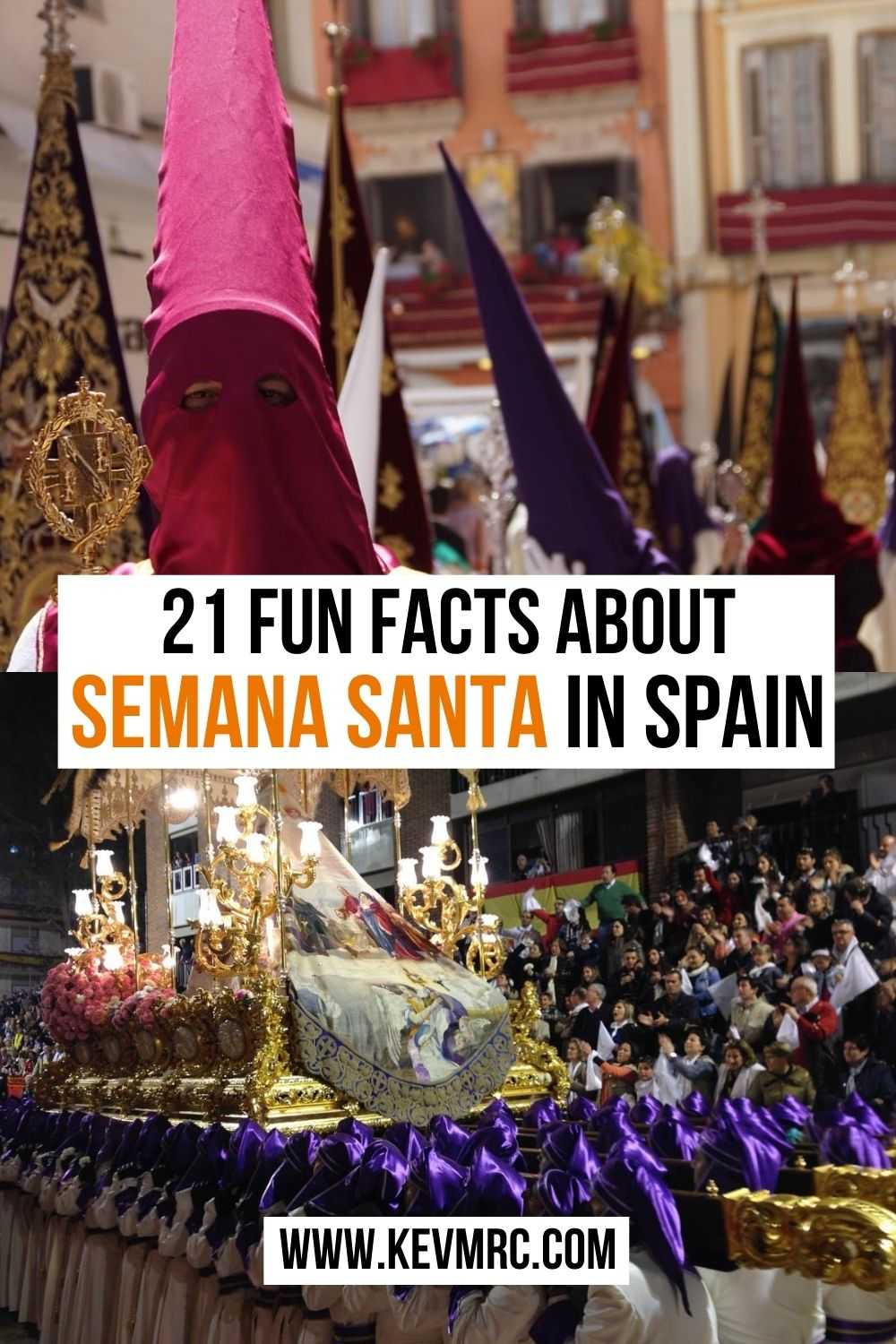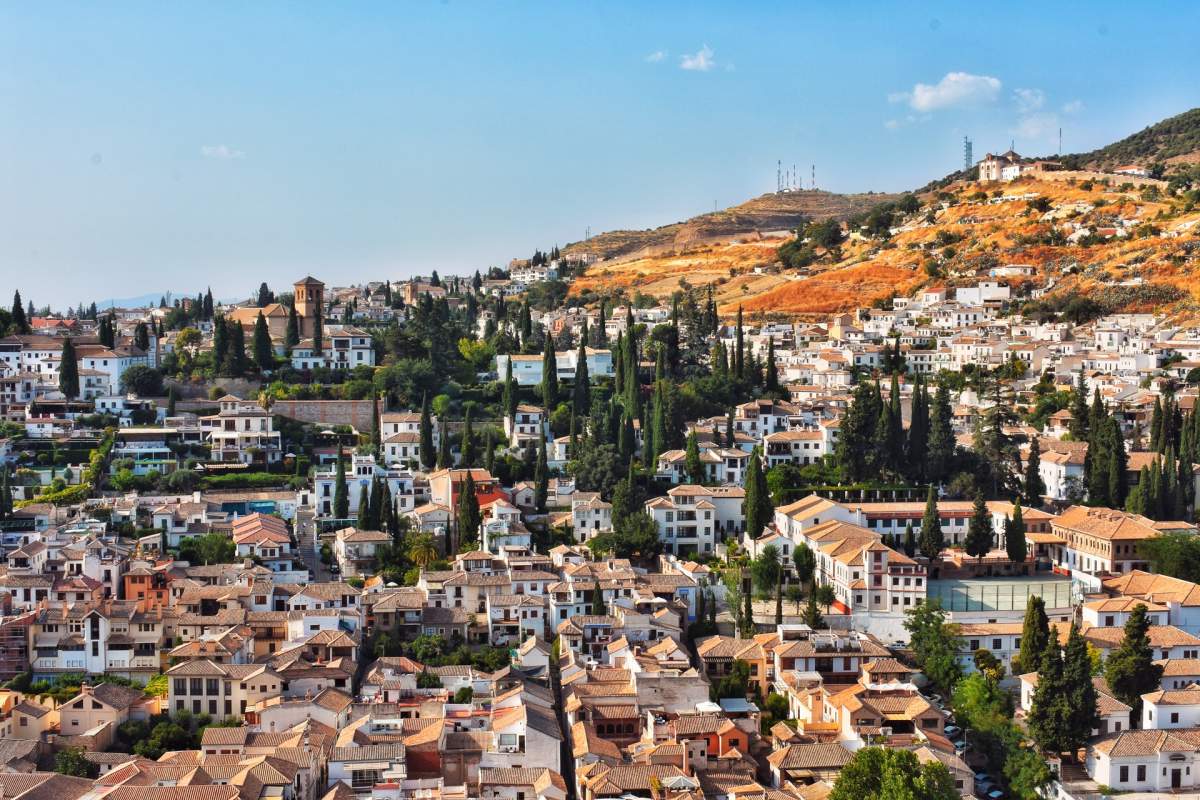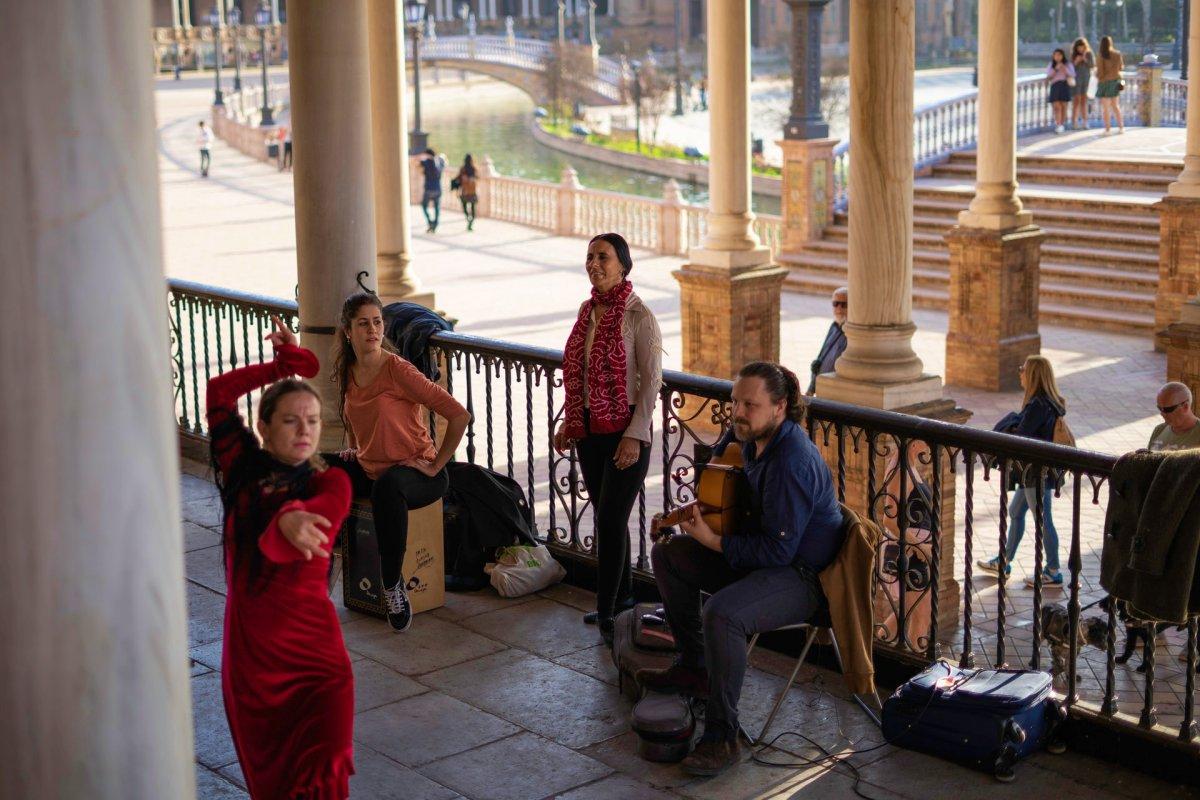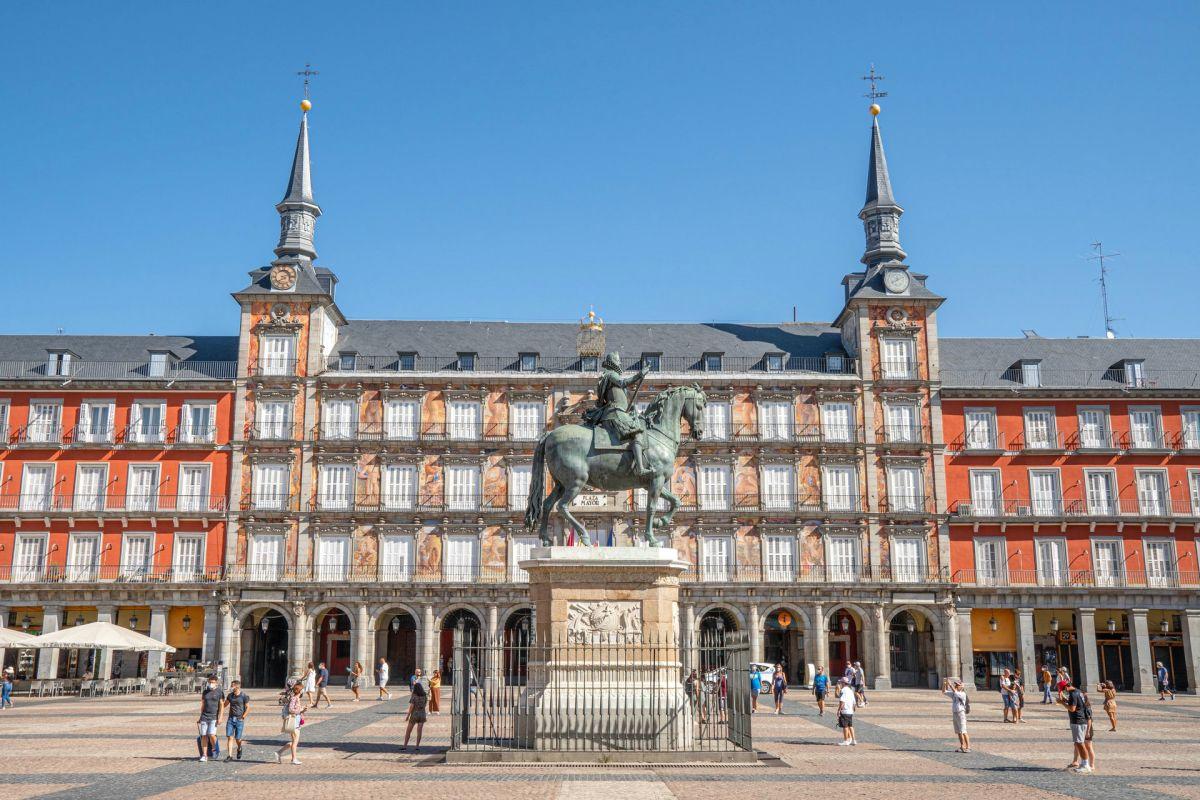21 Semana Santa Facts (the best Easter in Spain facts)
In Spain, Holy Week (Semana Santa in Spanish) is one of the most important holidays in the country. During the whole week from Palm Sunday to Easter Sunday, there are religious processions that attract thousands of tourists and locals throughout the country.
Discover everything about this Catholic feast thanks to the following 21 Semana Santa facts! 🐣
The Best Facts About Semana Santa
Semana Santa is a fantastic and holy celebration taking place in Spain. Learn everything about it through these Easter in Spain facts:
1. Semana Santa is a Spanish tradition that lasts a week and translates to “Holy Week”
“Semana Santa” translates to “Holy Week”. It is a Spanish celebration that happens before Easter and commemorates the Passion of Christ, which is the story of Jesus’ final days in life.
Spaniards are extremely Catholic, with a whopping 70 percent of the population. Because of that, almost everyone is either directly or indirectly related to the celebrations of Semana Santa, as it is a very important festival. Be ready to witness lots of parades if you travel to Spain around Easter!
2. Semana Santa is a major celebration in lots of countries, not only in Spain
Among all celebrations in most Spanish-speaking countries (and even more), Semana Santa is considered the major one. It takes place in several countries’ largest cities, but generally all around the country. The week as a whole is very important and celebrated by almost all the population.
The biggest countries other than Spain in which Semana Santa is a huge deal are Portugal and most Latin American countries.
3. Floats are being carried through the city during the whole week, some weighing more than 1,000 kg / 2,204 lbs!
One of the most beautiful events of Semana Santa is when floats, or “pasos” in Spanish, are carried through the city. This happens every day of the week and those parades walk through several cities. Because of that, the people lifting have to be extremely enduring, as the walk lasts for hours, and through tens of kilometers/miles.
Pasos are usually made of statues of Jesus, the Virgin Mary, and other major Catholic Saints. They are way heavier than they look, sometimes reaching over 1,000 kg / 2,204 lbs!
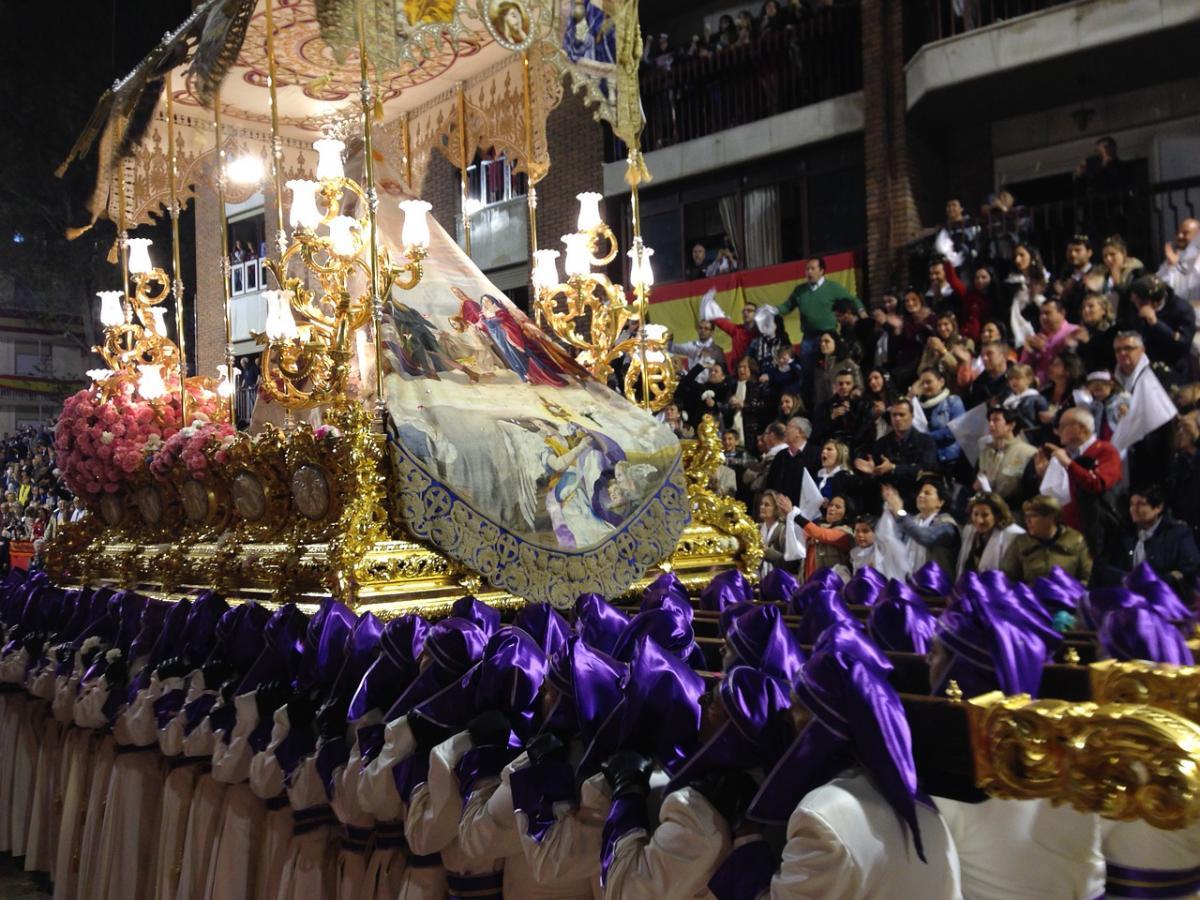
4. The Torrija is the traditional dessert that people eat during Semana Santa
You have probably figured it out by now: Semana Santa is more than just parades, it is a whole spirit and a way of celebrating for a whole week. It gathers people through religion and festivity. Another aspect of that is, like most festivals, food.
The traditional food-related to Semana Santa is a dessert: the Torrija. The main ingredient is a slice of bread, dipped in egg, fried, and soaked in either milk or wine. The final touch is a bit of honey and spices.
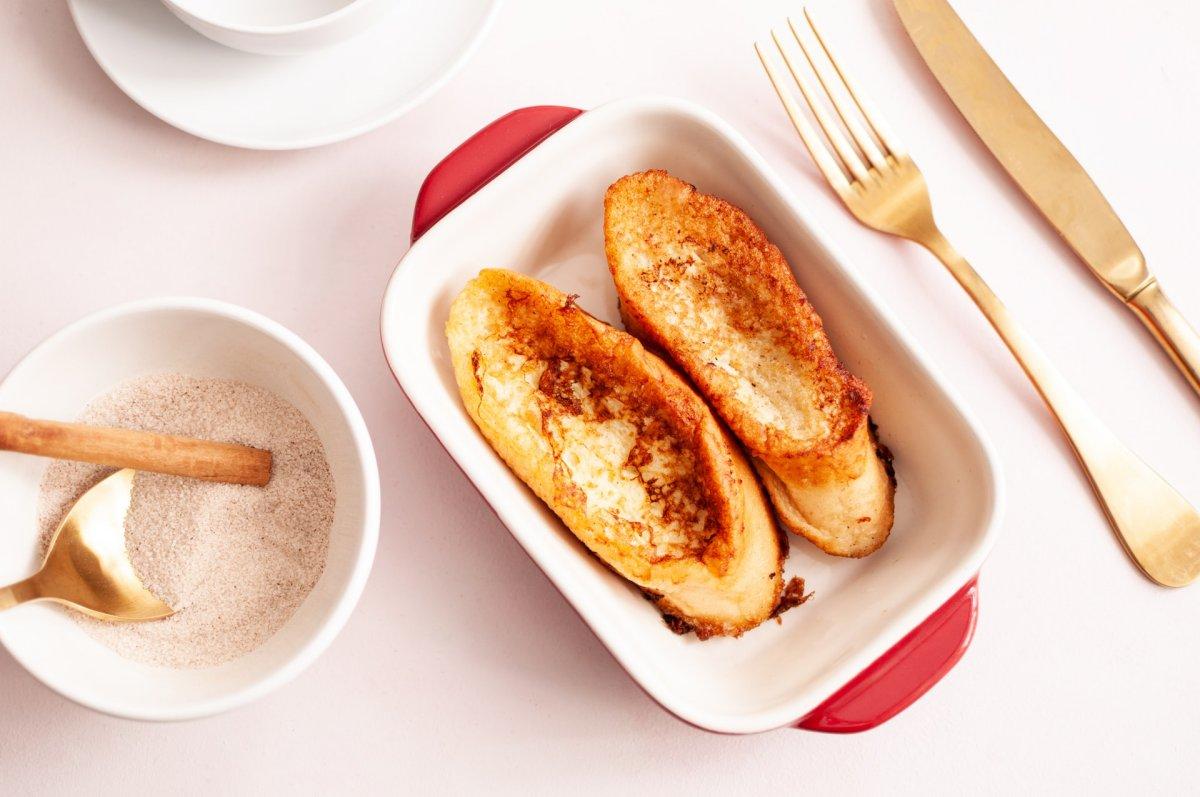
5. The Saeta, an emotional religious song, is sung by Semana Santa participants
Religion is very often associated with singing. It is one of the best ways to gather people together and to claim their beliefs. In the Catholic religion especially, a huge part of the masses is dedicated to songs.
Semana Santa is no exception: there is in fact a special and very emotional religious song associated with it. The saeta mourns the suffering and death of Jesus Christ. It takes its roots in flamenco folklore and is still sung to this day.
6. The color purple is important during Semana Santa, as it translates to suffering
The theory of colors is fascinating. It gives a deep meaning to every single one of them. Purple, since it is a mix of blue and red, combines both of its properties. It is associated with spirituality, royalty, passion, and the sacred. Because it is rare in nature, it is often seen as having sacred meaning.
On top of that, it also translates to suffering, which is why you will probably see lots of it during Semana Santa, and in the Catholic religion in general.
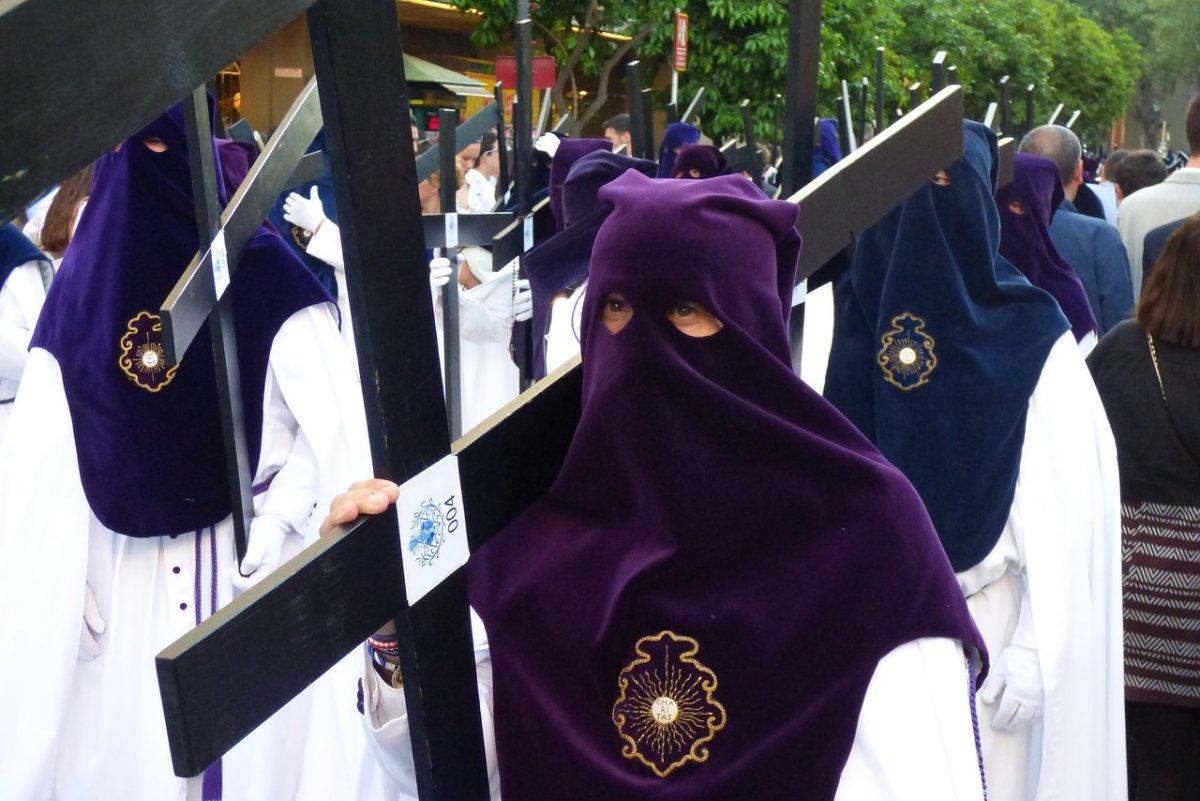
7. The biggest Spanish celebrations during Semana Santa take place in Andalusia
Andalusia is the southernmost region of continental Spain. It has a huge history and heritage, having seen lots of different civilizations on its lands. While the Romans and the Moors were arguably the most important of them, Christians are nowadays very present.
That can be seen especially during Semana Santa because the biggest Spanish celebrations take place there. Seville, Málaga, Córdoba, and Granada, the largest cities, are all very famous for their processions.
8. Zamora, on the other hand, hosts the oldest and probably the calmest celebration
Zamora lies near the Portuguese border. It is famous for being called a “museum of Romanesque art” because of its churches from the 12th and 13th centuries, and it is actually the city with the most Romanesque churches in all of Europe!
The most important celebration of the city is… Semana Santa. It is one of the oldest cities to start the tradition of Semana Santa, but it is very calm compared to most other towns. Processions are nocturnal and marked with meditation and silence.
9. Nazarenes look like the KKK, but they have nothing to do with them!
Nazarene is a title applied to Jesus and to those who followed him and his ideas. It was used to refer to a Jewish sect of devotees and was later transferred to the most devoted Christians.
During Semana Santa, you might see some of them walking barefoot, with shackles and chains… for up to 14 hours! On top of that, they are covered in white with pointy hoods, looking like the Ku Klux Klan. Don’t worry though, they have nothing to do with them.
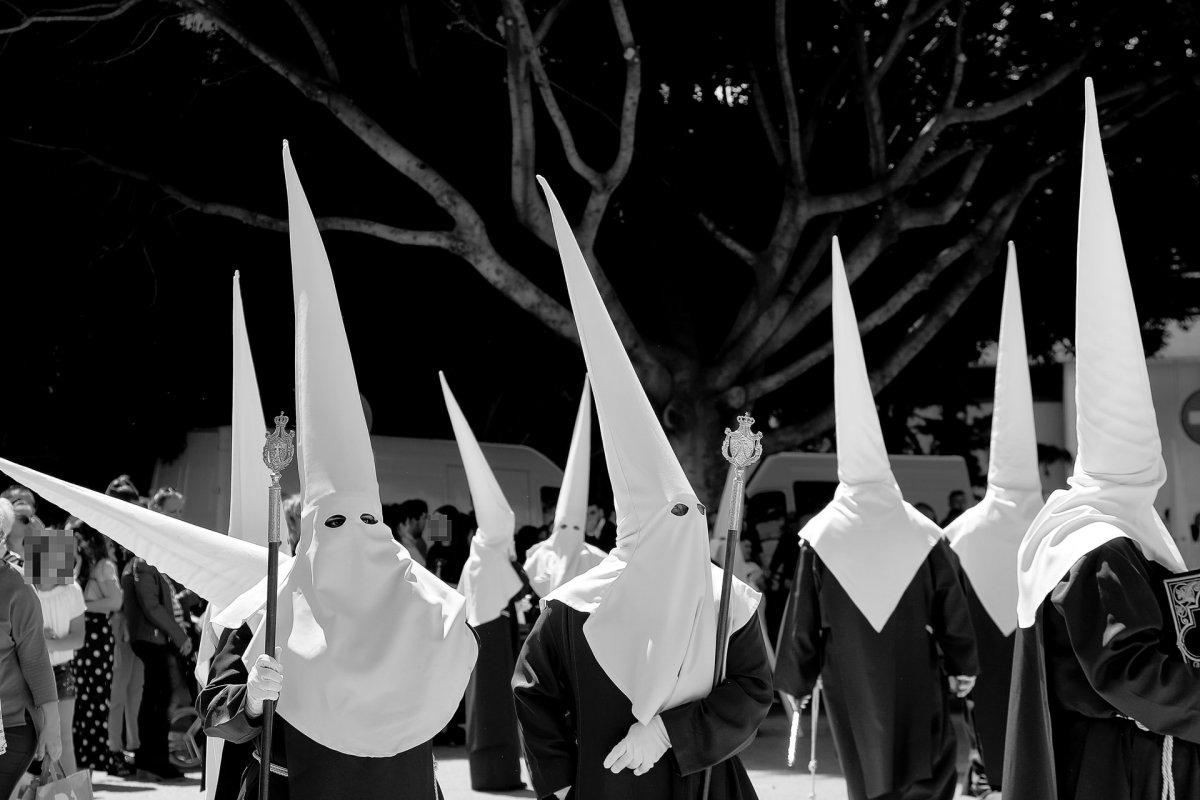
A procession during la Semana Santa in Malaga, Spain
10. Brazil is the most important Catholic country celebrating Semana Santa
The Catholic Church in Brazil is huge, and the Catholic religion is generally very important in the country. There are over 400 bishops and archbishops, and over 250 dioceses. Almost 65 percent of the Brazilian population considers itself Catholic, which translates to 123 million people, making Brazil the country with the largest Catholic community in the world!
During Semana Santa, tens of thousands of people participate, and the largest open-air theater in the world is set in Pernambuco. You can see hundreds of actors there.
11. The biggest celebrations in Portugal take place in the northern city of Braga
While Portugal is often opposed to Spain, because of their respective languages and American conquests, both countries are unified through religion. They are some of the most devoted Catholic countries, and therefore have some of the most amazing Semana Santa celebrations. This makes sense since a staggering 84 percent of Portuguese are Catholics.
In Portugal, the biggest celebrations take place in Braga, in the North of the country.
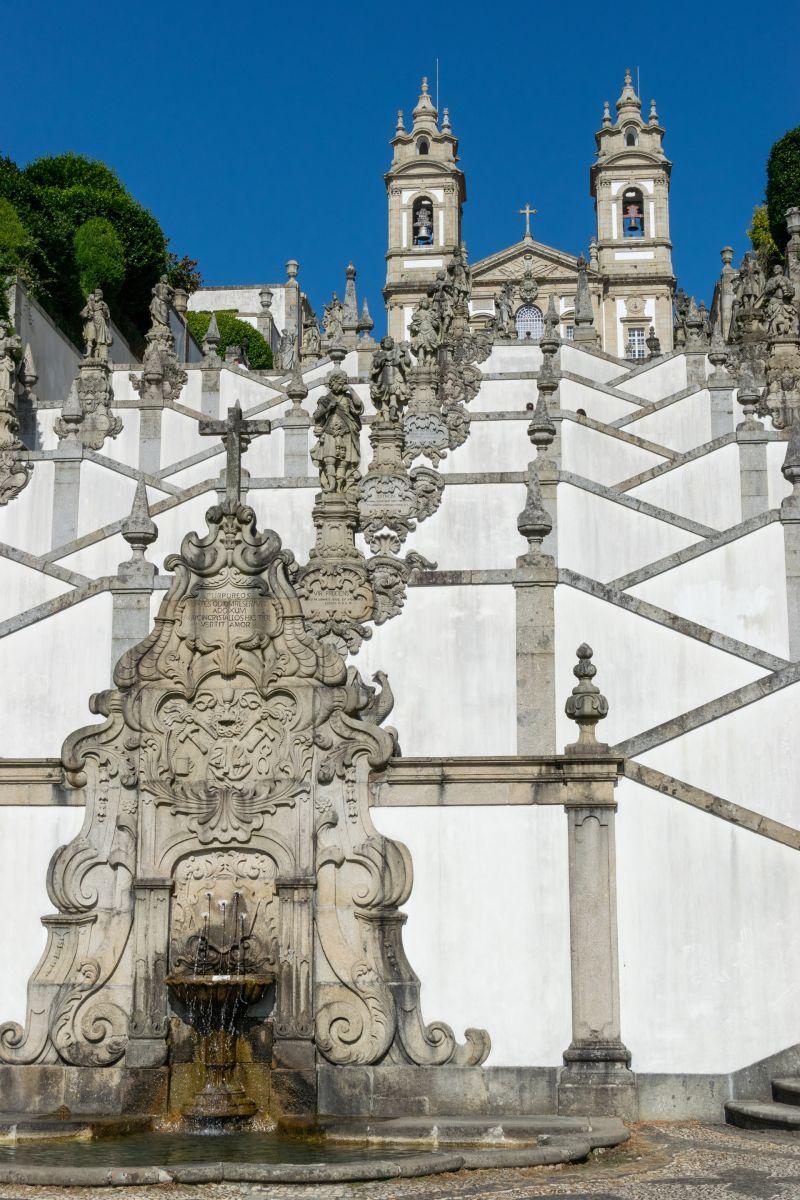
Sanctuary of Bom Jesus do Monte in Braga, Portugal
12. Quito, Ecuador is famous for its unique tradition, dating back to Roman times
Quito is the capital of Ecuador. It used to be called Saint Francis of Quito, and a fun fact about it is that it is the second highest official capital city in the world, after La Paz, Bolivia. Its historic center is fantastic and even one of the best-preserved in the Americas. On top of that, Quito, alongside Kraków, Poland, was the first World Cultural Heritage Site declared by UNESCO in 1978.
During Semana Santa, there is a unique tradition happening there: Arrastre de Caudas, the dragging of the cape, is when the archbishop waves a large flag in Quito’s Cathedral.
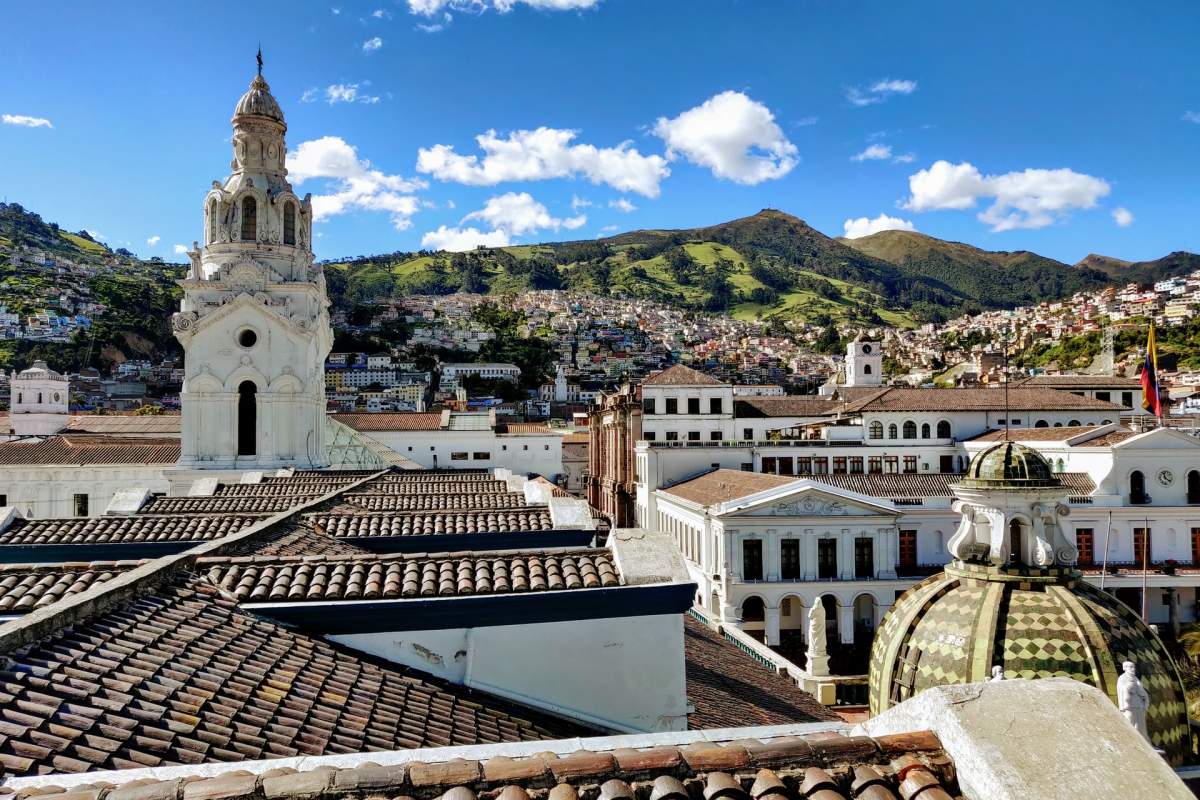
Quito, Ecuador
13. During Semana Santa, some prisoners are freed
This is probably the most surprising and unusual fact about this very serious and festive Catholic celebration. In 1759, a riot broke out in a prison in Málaga, but the reason will surprise you: inmates decided to carry Jesus’ image through the streets when they learned that Easter processions were about to be canceled, because of the plague.
King Charles III, the reigning monarch, was so moved that he decided to free prisoners every Easter. And to this day, in Spain, two dozen jail inmates are freed every Easter.
14. In Verges, Catalonia people dress up as skeletons and dance during Semana Santa
There are some unusual ways to celebrate, but very few of them match the tradition of Verges, Catalonia. Dancing the Dance of Death for Easter, on a very holy and sacred week, is very astonishing, obviously.
People there dress up as skeletons and run around the streets, dancing, and playing drums. Their goal is to remind everyone that whatever your status in life is, the Dance of Death unites all.
15. Each float is unique on top of being very detailed
Floats or pasos are so majestic that they can easily be called world-class, and maybe even more. Decorated with flowers and lights, they are very thought-through and extremely detailed. What is most fantastic about them is that they are unique, and made by locals.
Some of them have long skirts on purpose, to hide the handles so that it seems they are floating and moving on their own. Each city decorates its pasos with its distinct features.
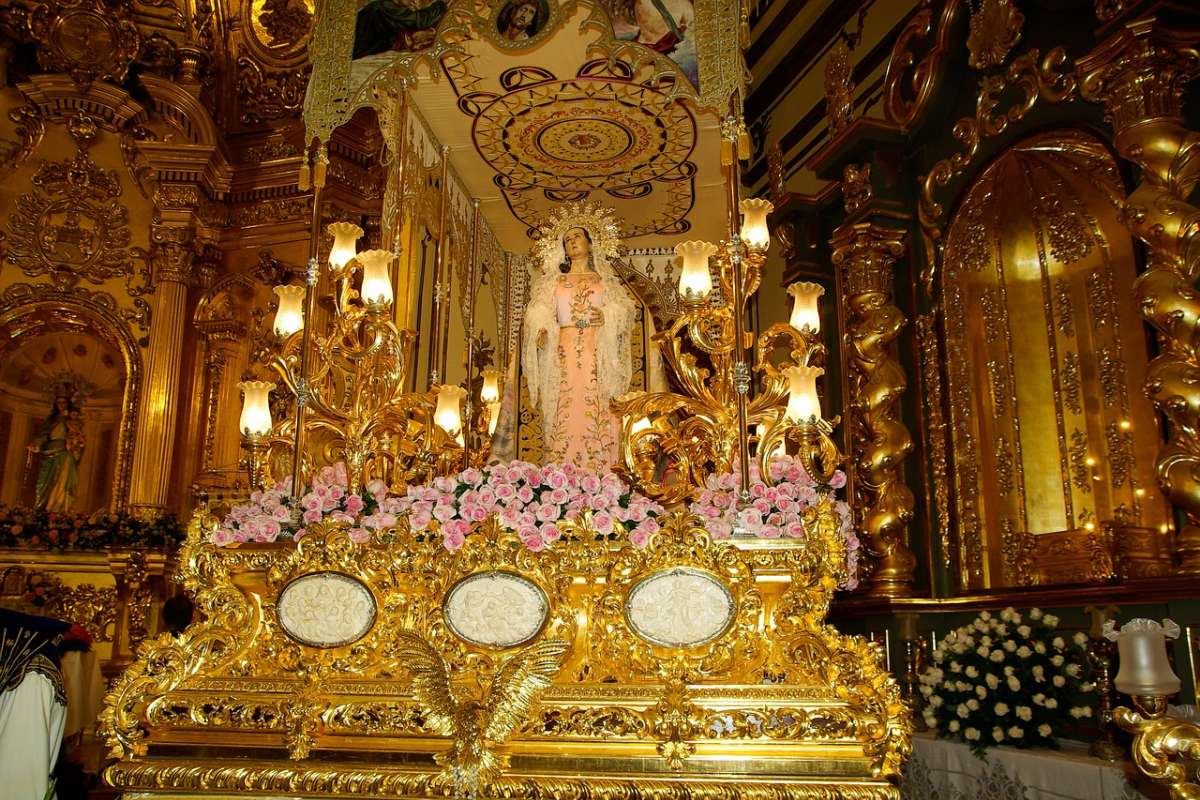
16. A lot of symbolisms are a big deal for Semana Santa participants
Almost every day of the week is taken as seriously as the others, and Semana Santa participants take symbolisms very seriously. For instance, on the first day of the week, locals bring out palm branches, the symbol of victory, peace, and eternal life. They greet the arrival of the creator by waving them through the city.
In some Andalusian cities, you can even find statues of Jesus on a donkey, which is exactly what is written in The Bible.
17. Each procession tells a story, it’s not only beautiful
While processions are simply splendid, they have a deep meaning and tell religious stories in a beautiful way. Just like in The Bible, the stories are progressively built up through the week, from Palm Sunday to Easter Sunday. Every day of the week has a different general mood.
From Monday to Wednesday, masses are held depending on the theme of the day. After that, it is time for the passionate processions for the rest of the week.
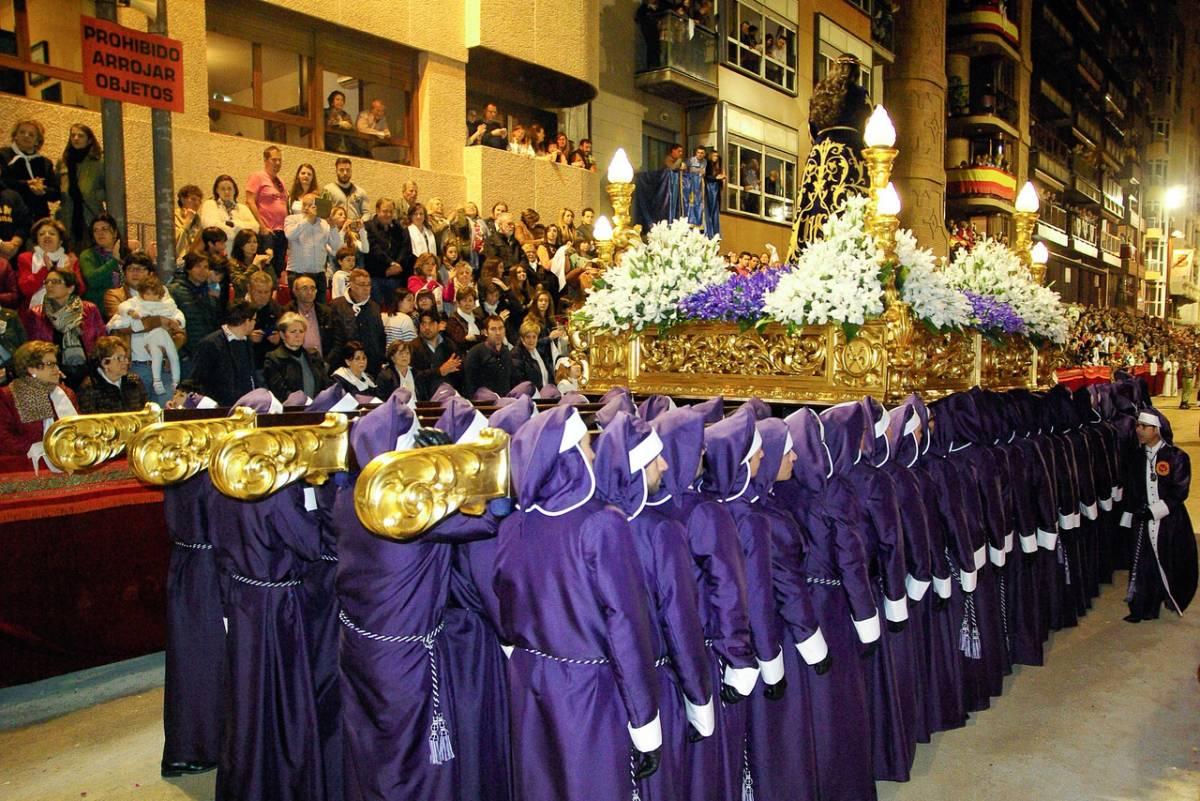
18. Maundy Thursday is an important day during Semana Santa
Maundy Thursday is the name of the Thursday right before Easter. It is the iconic day when the Last Supper of Jesus and his apostles happened, and Jesus reveals he will be betrayed by one of them.
Semana Santa is the beginning of the three-day celebration. In Seville, all processions converge in the Cathedral, before going back to their local churches. Besides, the night between Thursday and Friday is called the Madruga.
19. There is more than just processions during Semana Santa
Throughout this list of facts, I have told you how Semana Santa is festive and features lots of parades. However, there is more than that. For example on Holy Saturday, the Vigil of Easter, everyone stays quiet and peaceful. Christians stay awake and remember the death of Jesus on the last day of Semana Santa.
The vigil starts on Saturday when the sun sets until the sun rises on the next day, and people light a candle then.
20. In Valladolid, you can see a theatrical play
Good Friday is one of the most important days of Semana Santa. In the morning, the crucifixion towards the death of Christ is observed. There is a special mass held on this day, called Sermón de las Siete Palabras, which means “the Seven Last Words”. This is a very important mass for local people.
In Valladolid, the mass is announced in a unique way, with church representatives riding horses, accompanied by trumpets! There is also a theatrical play to depict the scene of the crucifixion.
21. Semana Santa is very meaningful in Málaga, Andalusia
If you want to see a different Semana Santa celebration compared to most ones, you should travel to Málaga. While most Andalusian cities celebrate in a very solemn manner, there are lively celebrations in Málaga.
All around the city, you will see colorful robes and lights, smell floral scent and incense, and hear improvised acapella performances alongside the processions. There are also some very good restaurants to eat traditional Easter dishes.
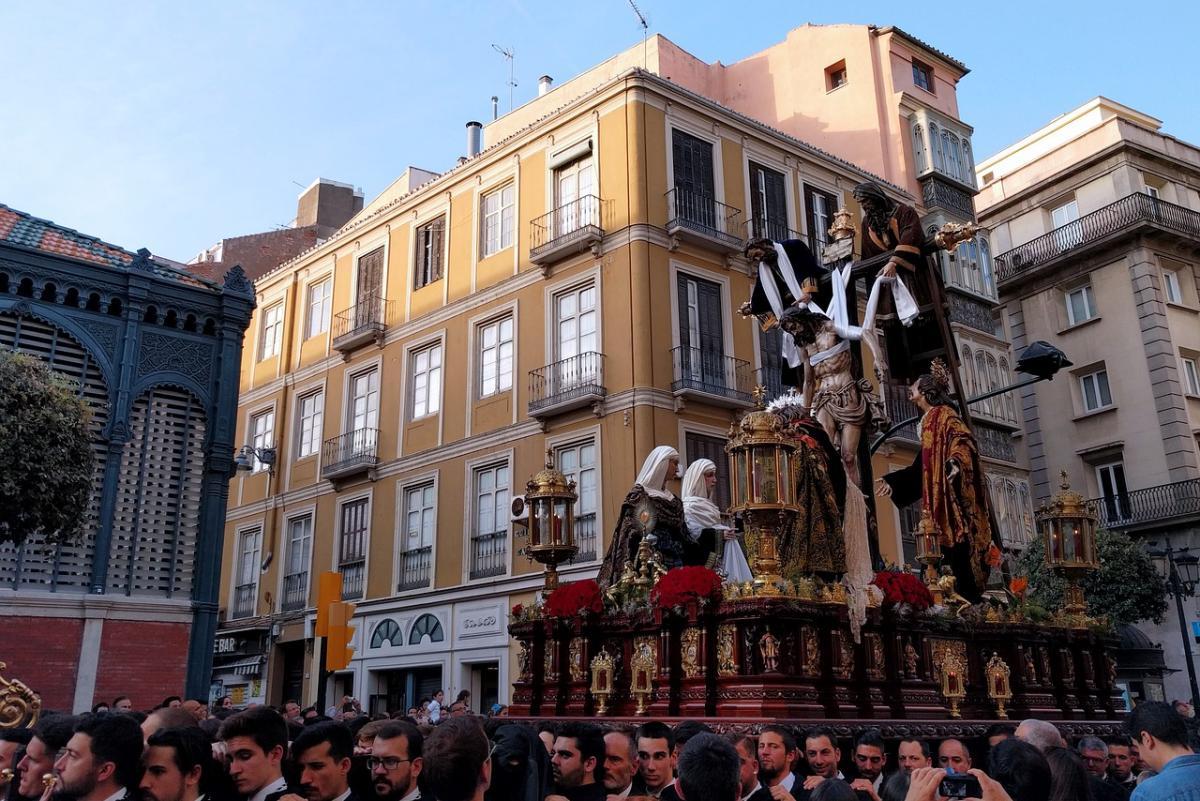
Procession in Malaga
So there you have them, the 21 most interesting facts about Semana Santa in Spain! I think you understood it already, but Easter is a truly big deal in Spain.
If you want to learn more about the country in general, feel free to keep reading for other information:
More Facts!
Did you like these facts about Easter in Spain?
I have even more facts about Spain, I’m sure you’ll love reading them!
Here’s the main guide of the best Spain facts 👉 All the Facts about Spain
Check out these facts by city/region:
- Facts about Madrid
- Facts about Catalonia
- Facts about Bilbao
- Facts about Barcelona
- Facts about Seville
- Facts about Granada
- Facts about Malaga
- Facts about Valencia
- Facts about Castilla la Mancha
Or these Spain facts by topic:
- Facts about Christmas in Spain
- Facts about religion in Spain
- Facts about schools in Spain
- Facts about Spanish food
- Facts about the Spanish language
- Facts about bullfighting in Spain
- Facts about sports in Spain
- Facts about music in Spain
Or click here to see ALL the facts up on the blog! Spoiler alert: there’s A LOT of them.
The Full List of 21 Facts About Semana Santa
- Semana Santa is a Spanish tradition that lasts a week and translates to “Holy Week”
- Semana Santa is a major celebration in lots of countries, not only in Spain
- Floats are being carried through the city during the whole week, some weighing more than 1,000 kg / 2,204 lbs!
- The Torrija is the traditional dessert that people eat during Semana Santa
- The Saeta, an emotional religious song, is sung by Semana Santa participants
- The color purple is important during Semana Santa, as it translates to suffering
- The biggest Spanish celebrations during Semana Santa take place in Andalusia
- Zamora, on the other hand, hosts the oldest and probably the calmest celebration
- Nazarenes look like the KKK, but they have nothing to do with them!
- Brazil is the most important Catholic country celebrating Semana Santa
- The biggest celebrations in Portugal take place in the northern city of Braga
- Quito, Ecuador is famous for its unique tradition, dating back to Roman times
- During Semana Santa, some prisoners are freed
- In Verges, Catalonia people dress up as skeletons and dance during Semana Santa
- Each float is unique on top of being very detailed
- A lot of symbolisms are a big deal for Semana Santa participants
- Each procession tells a story, it’s not only beautiful
- Maundy Thursday is an important day during Semana Santa
- There is more than just processions during Semana Santa
- In Valladolid, you can see a theatrical play
- Semana Santa is very meaningful in Málaga, Andalusia
Share the knowledge! Click on the buttons below to share these facts with your friends, and help them learn more about the world 🙂
Pin this to Pinterest!
Enjoyed this guide? Then help a fellow traveler and pin it! They'll most definitely love you for it, 100% guarantee.
